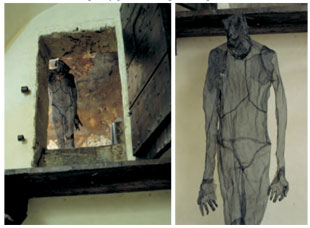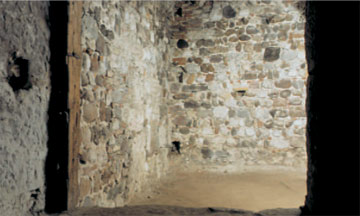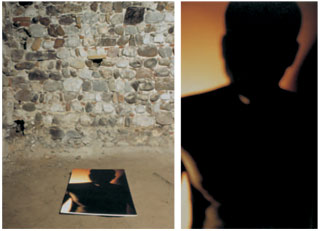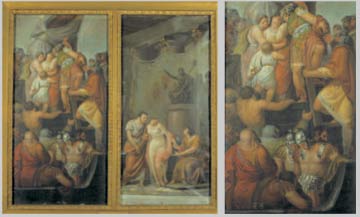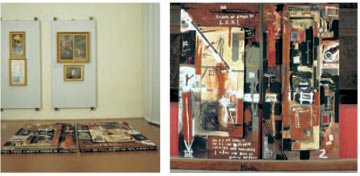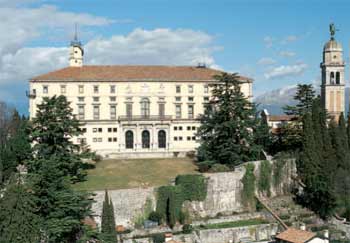
CIVICI MUSEI E GALLERIE DI STORIA E ARTE
Castello di Udine
tel. 0432/271591
![]() critical text by Alvise Rampini
critical text by Alvise Rampini
Nowadays
contemporary works and old masterpieces are often put side by side, but
this is a different way to experience it, avoiding any sacrilege (if something
sacred still exists) and looking for a more subtle relation. This juxtaposition
allows both ancient and contemporary art to keep their integrity, leaving
both present and past silently untouched and adding a further meaning
to be discovered. The three artists involved in the project seem to stand
out, each in his or her own way, for their noiseless and yet intense art.Elena
Grimaz constantly relates to space, which she fills with non-invading
presences modelled by concept and by the choice of the material. The works'
position itself produces paradigms that turn out to be “other”: other
title, other work, exploring places – whether they are woods or boxes
– and suggesting a reflection on “close” and “open”, which perfectly suits
the prison of Udine.In that same place, Michela Guatto searches into contemporary
man through multimedia tools, breaking down and putting back together
in a work that has the scent of introspection. Internal and external are
terms of a research leading the artist to maintain that man has been driven
by “the ongoing flow of information” and by “the endless change to an
introspective analysis just as to an external observation, in order to
regain a primeval harmony with the surrounding reality”. But what if the
surrounding reality is a prison?Massimo Toffolo painfully explores the
limits of reason in a multimedia world where accumulation and filing of
information force vision and communication within hackneyed terms, which
lack “that beautiful acceptation of art as the only way to keep one's
own identity”. Against tags and academies, he faces an example of academic
painting and disrupts the label that lies behind it with the impulse of
his own paintings.

